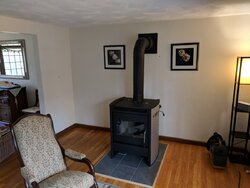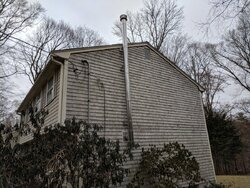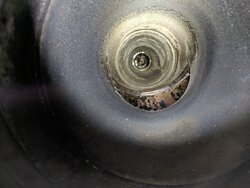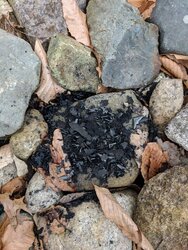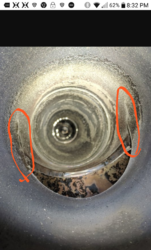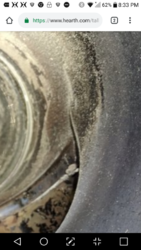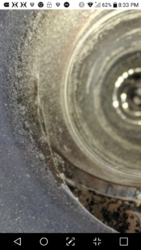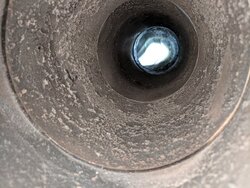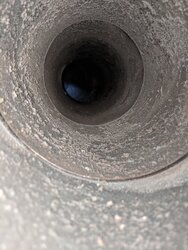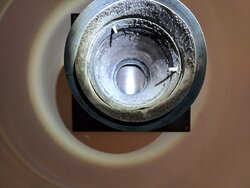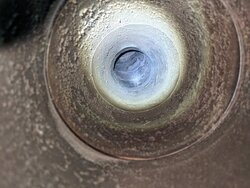Two nights ago, about 20 minutes after loading up my stove for the night I had a chimney fire.
I installed the stove and chimney in January of 2018 so a little less then 1 year ago. It is a Blaze King Chinook 30 and Ventis Class A pipe. So far I burned about 1 cord or so last winter and maybe 1 1/2 cord this winter. Last years wood was seasoned for about 3 years and this year I have been burning oak that has been seasoned about 1 year but was a standing dead tree that came down last year. Moisture meter reads about 20% for what has been burned this year.
I had just filled up the stove with wood which had cooled to just below the active range on the thermometer. I was running the stove in bypass waiting for it to warm back up when after about 20 minutes for this I started heard loud popping noises coming from the chimney. I came downstairs where the stove is and the room was filing with smoke. I shut down the stove and went outside to look at the chimney and I could hear the popping and creaking noises and I could see embers coming out the of the chimney. I could also see red glowing at the top of the chimney cap. I called the fire department and go my family out of the house. When they arrived about 5 minutes later and fire in the pipe had going out.
Over the course of the next hour I had most of the fire department in my house and they took the smoldering wood out of the stove and checked the pipe inside and outside the house. Oddly, they said everything looked pretty clean with very little buildup. They did find about 1 cup of what looked like black and glowing embers in the bottom of the clean out.
This spring after burning about 1 cord of seasoned wood, I took the clean out off the chimney and inspected the vertical pipe and it looked very clean. I haven't inspected it this year since I haven't really burned that much wood. This is my second wood stove and in my previous house I burned wood for about 7 years. There I never had very much creosote in the chimney.
As far as I can tell I'm running the stove correctly, following all the procedures outlined in the owners manual. I generally only see smoke / water vapor coming from the chimney for a little while after reloading and the cat seems t be functioning well, with the entire block glowing red at times.
Now I'm very nervous about using the stove again. I wounder what would have happened if I wasn't home and wasn't here to shut down the stove. I really can't think of anything else I could do run the stove cleaner as I'm always very mindful of doing everything by the book in terms of making sure it's running very cleanly.
Any insight / advise would be very much appreciated!
I installed the stove and chimney in January of 2018 so a little less then 1 year ago. It is a Blaze King Chinook 30 and Ventis Class A pipe. So far I burned about 1 cord or so last winter and maybe 1 1/2 cord this winter. Last years wood was seasoned for about 3 years and this year I have been burning oak that has been seasoned about 1 year but was a standing dead tree that came down last year. Moisture meter reads about 20% for what has been burned this year.
I had just filled up the stove with wood which had cooled to just below the active range on the thermometer. I was running the stove in bypass waiting for it to warm back up when after about 20 minutes for this I started heard loud popping noises coming from the chimney. I came downstairs where the stove is and the room was filing with smoke. I shut down the stove and went outside to look at the chimney and I could hear the popping and creaking noises and I could see embers coming out the of the chimney. I could also see red glowing at the top of the chimney cap. I called the fire department and go my family out of the house. When they arrived about 5 minutes later and fire in the pipe had going out.
Over the course of the next hour I had most of the fire department in my house and they took the smoldering wood out of the stove and checked the pipe inside and outside the house. Oddly, they said everything looked pretty clean with very little buildup. They did find about 1 cup of what looked like black and glowing embers in the bottom of the clean out.
This spring after burning about 1 cord of seasoned wood, I took the clean out off the chimney and inspected the vertical pipe and it looked very clean. I haven't inspected it this year since I haven't really burned that much wood. This is my second wood stove and in my previous house I burned wood for about 7 years. There I never had very much creosote in the chimney.
As far as I can tell I'm running the stove correctly, following all the procedures outlined in the owners manual. I generally only see smoke / water vapor coming from the chimney for a little while after reloading and the cat seems t be functioning well, with the entire block glowing red at times.
Now I'm very nervous about using the stove again. I wounder what would have happened if I wasn't home and wasn't here to shut down the stove. I really can't think of anything else I could do run the stove cleaner as I'm always very mindful of doing everything by the book in terms of making sure it's running very cleanly.
Any insight / advise would be very much appreciated!


